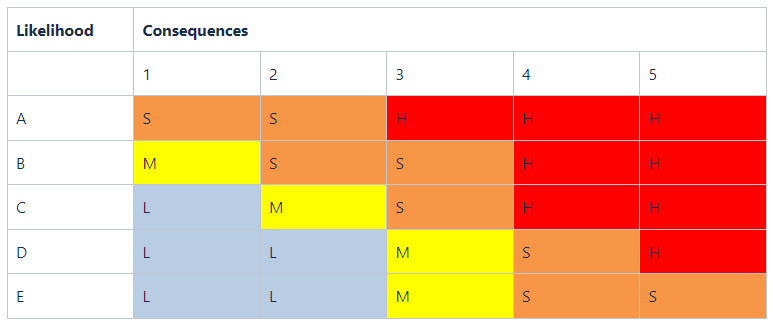There are many activities which involve people from both the body and from the wider community. The risk management of these activities to children and young people need to be a priority.
The Commonwealth Child Safe Framework (the Framework) aims to protect children and young people from the risk of harm or abuse.
Definitions
Risk A situation involving exposure to danger
Risk Assessment A systematic process of evaluating the possible risks that may be linked to an activity or task.
Risk Management The risk assessment along with the documentation of procedures to avoid or minimise the impact of the risk.
Principles and guidelines
The following principles outline the elements of risk management according to the “Australian Standard of Risk Management” (Australian Government 2010).
Identify Risks Identify where, when, why and how events could prevent, delay or degrade the main outcome of the event, activity or meeting.
Analyse Risks Determine the likelihood of the risks to occur and the potential consequences related to the risks and how these could occur.
Evaluate Risks Compare the level of risk against the potential adverse outcomes so that decisions can be made on how to manage the priorities.
Control Risks Develop and implement strategies and action plans which are cost effective and beneficial to all involved.
Monitor and Review Risks Monitor the effectiveness of the processes put in place. Provide feedback for improvement, considering any follow up required from incidents.
Risk Management - Child Safety Risks Types of Child Safety Risks Potential child safety risks could occur within your programs, events and services



Risk Assessment Tool for Child Safety

Once risks are identified, they are evaluated on a two (2) dimensional matrix using a qualitative rating of the likelihood of the event occurring and the scale of the possible consequences. When risks have been identified, they are analysed by combining the consequences and likelihood to produce a level of risk. This form of evaluation provides a good graphical representation of how serious the risk is or where it lies within a group of risks. The risk analysis provides information critical to determining what risks need to be treated and what risks are accepted.
Likelihood
|
Level |
Descriptor |
Description |
|
A |
Almost certain |
Almost certain Expected to occur in most circumstances |
|
B |
Likely |
Will probably occur in most circumstances |
|
C |
Moderate |
Should occur at some time |
|
D |
Unlikely |
Could occur at some time |
|
E |
Rare |
may occur only in exceptional circumstances |
|
F |
Never |
It is not foreseeable that this will occur |
Consequence
|
Level |
Descriptor |
Description |
|
1 |
Insignificant |
No Injuries low financial loss |
|
2 |
Minor |
First Aid treatment medium financial loss |
|
3 |
Moderate |
Medical treatment required high financial loss on site |
|
4 |
Major |
Extensive injuries major financial loss loss of production capability |
|
5 |
Catastrophic |
Death huge financial loss |

Legend: H High risk; detailed research and management planning required at senior levels S Significant risk; senior management attention needed M Moderate risk; management responsibility must be specified L Low risk; manage by routine procedures
-2.png?height=120&name=LikeFamily_logo_RED%20(2)-2.png)